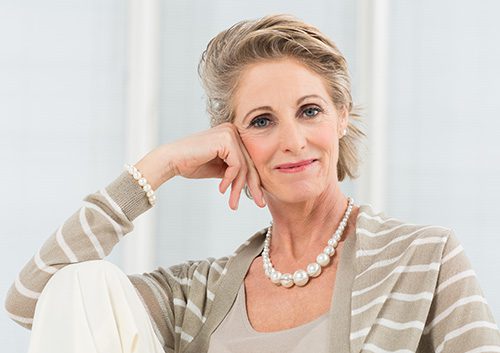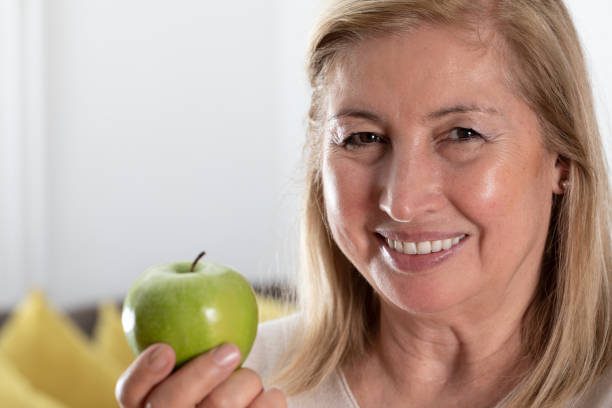Meet Dr. Bob Matiasevich
Bob: I grew up in Santa Cruz. I was born and raised there. My father was a dentist. Growing up, though, I didn’t give a lot of attention to wanting to become a dentist. My father never pushed me into that direction. But, I love to build things with my hands. I used to always work with models, just tinker with things around the house. In fact, my brothers…my two brothers, were big jocks, but I never did hang out with them too much because I was busy always doing other stuff, Lego’s, that kind of thing. Even when I was in my teens, which may be a little bit embarrassing but…
Anyways, I went to school at the University of California, Irvine, and I became an economics major there. Studied economics. And one summer I came home and my father had built a new practice…a new office, behind Dominican Hospital, and it needed to be painted, so that was my job that summer. And, it was between my junior and senior year in college. So, that’s when I started thinking, “Man, I’m going to graduate here, what am I going to do?” And I had some internships doing other things, but nothing that really appealed to me at the time. I wasn’t sure if I wanted to go to law school or if I wanted to do…go in the corporate world and do something there.
And while I was painting his building, I noticed that, you know, I started to watch him for the first time. I go, “You know what, it’s not that bad of a job.” I always associated putting your hands in someone’s mouth, you know, I don’t know. And I started watching and I realized, you know, he has…he’s his own boss. He’s always enjoyed what he does, he really likes it. So, I started giving it some thought. That was really…the light bulb went off and I thought, “You know, this might be something I might be able to do.” So I went back to school, had to spend a couple of more years at Irvine because I changed majors. I finally graduated. I spent another year afterwards taking some more science classes. And then I applied to dental school.
I went to the University of Southern California. I graduated at the top of my class, and it was a lot of fun, I thought, “Wow, this is really for me. This is enjoyable. The science isn’t overwhelming, and I enjoy the science now for the first time. I love working with my hands.” So, when I got out of school I came and worked with my Dad. One of the things he told me while I was in school, though, was to volunteer as much as possible at the medical school and oral surgery department. He goes, “Learn how to pull teeth really well.” And he said, “Learn how to root canals really well because we do a lot of those here.” So, when I got out, I came up and started practicing with him and I worked with him for twelve years until he retired and I took over the business.
I’ve just really enjoyed dentistry all along. And I continue to learn more and more. I think he instilled that in me a lot because he was like, “Bob, you should learn how to do this.” And it was the first thing he told me to learn how to do was to go learn how to do…deal with people with TMJ problems. So, I spent a year…I did a residency down in San Diego and I learned how to treat people with facial pain, tempormandibular joint problems. I brought it back to Santa Cruz, started doing it. My patients started getting better. I remember, I had a patient, Carol, who came to visit and she had had a problem for a long time. Real nice, young lady, but she could barely open her mouth I applied these new techniques to her and she got better. She was just stoked. It changed her life. She was able to go out and not be embarrassed in public, and eat again, and open her mouth, and not have it get stuck open like it had been happening.
My Dad then said, “Why don’t you learn how to do dental implants? Dental implants are really coming along, you know, that’s going to be the wave of the future because people don’t like their dentures. We do a lot of dentures here, but we’ve got to learn how to do things better for people.” I think, by and large, almost all dentists are very meticulous and detail oriented people. So, I think, whoever you pick as a dentist, if you’re just looking for the quality of work, yeah, there’s some ranges there. But, by and large, you’re going to get a pretty good product from just about anyone from that stand point.
But I think that dentistry is more than that, as I’ve sort of talked about. I think it’s more about the relationship building. Understanding what they want…what a person wants. Do they…Are they likeable? Do you enjoy talking to them? Do you enjoy seeing them? Do you trust them? Do you value their opinion? And are they actually…do they look like they enjoy their work, too? If they enjoy…If you find a dentist that looks like he enjoys or she enjoys their work, and they have a legitimate practice, I think you’ve found somebody that you can have for a lifetime right there. Because that person, then, if they like what they do, they’re going to be constantly trying to build on their skills and get better at it so that they can serve you better. And also so that they can just be more efficient, and just an overall better clinician and healthcare provider for you.
That’s really one of the things that’s happened is our general practice now is very inclusive. There really isn’t anything we refer out any more. I mean, it’s rare that somebody would need to be referred somewhere. We have a big general practice, so it’s a family practice. So, we see people of all ages from, anywhere from six, seven years old up to 97. And we do, you know, crowns, fillings, root canals. My real joy is the patient that is 50, 60 years old, or sometimes is younger, actually, that hasn’t been to the dentist in a long time and is either fearful because of past experiences, maybe they’ve neglected their mouth, a lot of different emotional things that might be going on. So we’ve trained a lot in sedation dentistry. Trying to help people, my whole staff. That was one of the big things when I took over the practice from my father, is that I wanted to get my staff to learn to communicate with these people.
One of the things that I saw a lot of, as I was doing dentistry over the first 12 years was, I’d see these signs on dental offices, or advertisements that “we cater to cowards” and I always thought that was kind of condescending to the individual, because, when I started hearing some of these people’s stories, they were frightening. I mean, I would get nervous listening to these stories, I get kind of scared, “Wow, really, that’s what happened?” And so, for them to pick up the phone and call us, I thought that was an act of bravery on their part, to be able to call us after not going to a dentist for 30 years. You know, I had a patient that came in, Renee, not too long ago and she hadn’t been to the dentist in 30 years. She had been married for 40 years. Her kids were out of school. She said, “It’s my time.” And she told me her story, which was…I don’t want to get into the story because it was a scary story. We were able to rebuild her mouth, basically, using a combination of dental implants, foam crafting, and do it in a way where her comment afterward was, “Wow, that was magic.”
I was like, “Really?” I mean, this is just what we do. It was just, it was neat.
A lot of our patients now, are people that are calling us either from something they heard that we are doing in the community, or they see the videos online at our website that talk about, you know, “I hadn’t been to the dentist in 20 years,” or “Last time I was in the dentist was when I was in the military and the Navy and had bad experience there, I heard you guys are gentle and kind.” I have great staff. They’re the ones that bring these people in, and luckily I am able to meet them after they have turned them on to me.
Really, I love dentistry, and I love, actually, all aspects of it. There’s really nothing that I don’t dislike doing. I like doing fillings. I like doing crowns. I like doing surgery I like all of that stuff and I enjoy learning about all of it and trying to get better at it all the time. And I enjoy my patients. You know, I can know other dentists in the community, I can know other specialists in the community, but if I’m not a patient of theirs, I don’t really know what their bedside manner might be with my patients. I’m kind of at a mercy when I send somebody there. Yeah, and that’s unfortunate because that’s the way it is. You know, I might have met them at a study group, or something like that, but I’ve never worked side by side someone. And if you don’t work side by side someone, you don’t know what their mannerisms in, or their values, ethics, and things are like.
In our office, we offer, like for new patients, and this would apply also to existing patients, we offer two types of appointments right off the bat. One is a regular comprehensive exam; x-rays, cleaning, and everything. The other one is a talking consultation. That’s generally complimentary. And that’s where I would usually start with either my existing patients or a new patient to the practice, especially if they are interested in cosmetics, doing something like that. And the reason is, is because I want to find out what it is that they want, what exactly. The best way to do that is to get to know them and have them tell me, what did they envision? What is it that they see? One of the things my wife does, is when she goes to the grocery store, she always buys this hair magazine with all of the different hair styles in it. And, you know, it’s sitting around, so every once in a while, I’ll look at it. And what I’ve noticed in there is that a lot of times, it’s the same model with different hair styles on each one; maybe it’s red hair, short hair, long hair, but it’s the same lady in there. And it got me to thinking, and then I realized, well with imaging nowadays, what we can do for a lot of patients is we can bring them in and we can do the same thing with the teeth. You know, take a picture of their smile and image them with the teeth so they can get an idea of what they want based on what they’ve been telling us.
And so that’s really beneficial, because now they can kind of start to picture and we can talk about that and try to see, because what you want to do with cosmetics is…I may have an idea of what would make them look better. And a lot of patients they want my opinion, obviously, and they value it. But also, a lot of times, you know, me and them, we might not be on the same page, so we…I want to find out from them, “What do you see yourself looking like when you’re done? What is it about your smile that you don’t like, particularly?” We can image it, look at it that way, and from there, then we can start discussion. The other things that we can do is we can also do mock ups. Mock ups is where we take some of the material that we use for bonding, which is like a white filling material, and we can place it on the teeth and play with it and shape it. It’s like play-dough, basically, and do mock-ups for people in their mouth. And that way, they can get an idea of what it actually would look like in their mouth beforehand.
With any cosmetic case, though, whether it’s whitening, whether it’s just reshaping the teeth. Sometimes people come in and they don’t like a tooth because it is rotated or crooked. And it’s not so much that they need dentistry, per se, like a veneer…porcelain veneer, or bonding, maybe they just need some limited orthodontics. And nowadays with Invisalign and some of the newer techniques in orthodontics, we’re able to straighten teeth a lot faster, so a patient who maybe comes in and they like the color of their teeth, they just wish that this one wasn’t sticking out over here, we can move it back in a couple of months and get it straight. So that’s another thing.
So it’s mainly just educating about what the different options are and what we can provide. I’ve had several patients come in before…there was a young lady that came in just this last…maybe about two, three weeks ago. She came in because she had been my patient about, right when I started. Maybe 12, 13 years ago, I would say. She came in and she had a tooth that was rotated and was kind of out and she called it her snaggle tooth. Deborah came in and we put some bonding on it and reshaped it. And now, it’s 13 years later and she hasn’t been by, I haven’t seen her in 13 years. She came in and she said, “You know what, I think I want to do something else now because the bonding is getting old and starting to wear out and what do you think is an option?” So, we discussed doing some Invisalign and straightening the tooth and then just doing some whitening and taking the bonding off. She was ecstatic with that. You know what, three months, we’re done, and she has straight teeth, they’re white, and no more bonding on them. So, it’s just a matter of tailoring it to the patients needs and wants.



